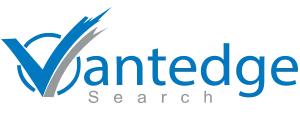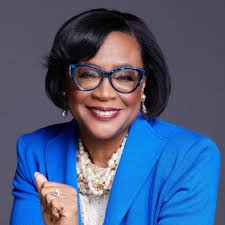- Culture as Catalyst or Catastrophe: Lessons from the Frontlines
- Expert Corner: Insights from Industry Leaders on Managing Workplace Toxicity
- Executive Movements: Transitions and Pivots
- Career Development Advice: Preventing Toxic Culture Before It Takes Root
View From The Top

Rajesh Khanna,
President,
Vantedge Search
Welcome to the November edition of The Vantedge Point! In this issue, we explore the transformative power of organizational culture—how it can either serve as a catalyst for growth or a stumbling block for success. From lessons on toxic culture drawn from high-profile CEOs to inspiring stories of leaders who turned workplaces around, this edition is packed with actionable insights.
We also delve into the subtle signals of cultural toxicity, the art of emotional recalibration, and the evolving priorities shaping CEO transitions in today’s dynamic business environment. These stories and strategies are designed to equip you with the tools to build healthier, more resilient organizations.
Dive in, reflect, and let’s shape a brighter future together!
Culture as Catalyst or Catastrophe: Lessons from the Frontlines

Toxic culture is a profound liability for organizational stability, performance, and reputation. As per an article in the CEO Magazine, unchecked behaviors, divisive cliques, and a lack of accountability allow toxicity to fester, eventually spilling over into the public eye and undermining both trust and credibility. Culture, when neglected, can become a breeding ground for issues that damage the very values companies work hard to project outwardly.
What triggers and feeds toxicity?
When CEOs Drive Companies Toward Crisis
Take the story of Travis Kalanick at Uber, whose relentless drive for disruption introduced the world to a new way of thinking about transportation. His success in scaling Uber was matched by his aggressive leadership style, which fostered a culture of unchecked competition and disregard for ethical boundaries. But Kalanick’s toxic influence was amplified by other factors: Uber’s rapid growth in an unregulated space, the external pressure to deliver high returns for investors, and a corporate landscape where boundary-pushing was almost expected. Together, these forces created an environment where toxicity could flourish, exposing the fragility of any culture that lacks strong checks and balances.
Similarly, John Schnatter at Papa John’s demonstrated how reputational damage can stem from a CEO’s comments and attitudes—but also how systemic issues can deepen the impact. Schnatter’s remarks on social and political issues not only tarnished the company’s public image but also underscored how deeply corporate culture can suffer when internal structures fail to moderate or challenge a CEO’s influence. His actions revealed the risks of a company where leadership holds unchecked authority, showing that when senior leaders are not held accountable by their boards or colleagues, the resulting culture can become insular and fragile.
At Wells Fargo, the now-infamous scandal of unauthorized accounts showed that toxic culture can be an insidious byproduct of pressure and poorly designed incentive systems. While CEO John Stumpf faced public backlash for his failure to address the issue, the toxic culture that encouraged thousands of employees to engage in unethical practices was also driven by pressures to meet aggressive targets. In this case, the toxic behavior was less about one person’s influence and more about a company-wide culture of over-ambition, where employees felt compelled to prioritize numbers over ethics.
Beyond the CEO: Systemic Drivers of Toxic Culture
While the role of a CEO is undeniably influential, the health of an organization’s culture is shaped by far more than the actions or values of one person. Toxicity within a company often arises from hidden forces—systemic structures, unchecked ambitions, and organizational blind spots—that, when left unaddressed, allow negativity to infiltrate the workplace. Recognizing these underlying factors can help companies build resilience against cultural decay, creating an environment where values and integrity flourish.
One of the most powerful drivers of toxic culture lies in incentive systems that prioritize short-term results over long-term integrity. In many organizations, performance goals are set aggressively, rewarding outcomes but neglecting the ethics behind them. When employees feel that their value is measured solely by metrics, they may feel pressured to prioritize numbers over honesty or collaboration, leading to an atmosphere where cutting corners becomes the norm. A balanced incentive structure that rewards ethical behavior as much as performance is essential for nurturing a healthy, transparent culture.
Weak accountability frameworks further compound the issue. In some companies, oversight structures are either poorly defined or inconsistently applied, leaving damaging behaviors unaddressed and allowing negative patterns to persist. Without strong, transparent governance from boards and senior leaders, organizational culture can devolve into an insular environment where poor conduct goes unchecked. Companies that thrive cultivate accountability at every level, ensuring that even subtle signs of discord are addressed before they grow into pervasive issues.
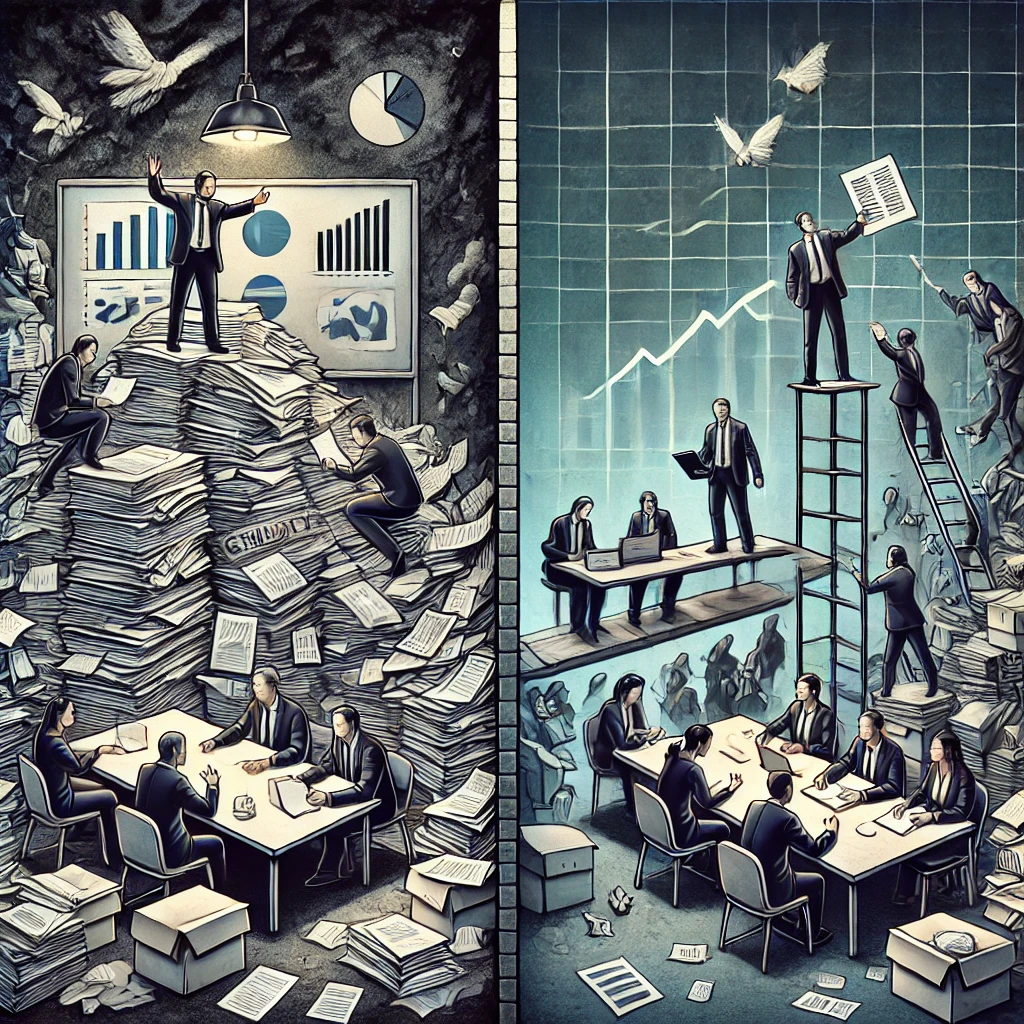
Finally, the role of middle management is often overlooked in conversations about culture, yet it is pivotal. Middle managers are the bridge between leadership and employees, translating corporate values into daily practices. When middle management is undertrained or undervalued, this crucial connection breaks down, and the organization risks a culture of inconsistency and misalignment. Companies that invest in developing their middle managers empower them to embody and enforce the organization’s values, creating a unified culture that resonates throughout the entire company.
Conclusion
These underlying factors remind us that while CEOs are instrumental, a truly resilient culture requires a holistic approach. From ethical incentive structures to effective accountability, each component must work together to reinforce values and protect against toxicity. Culture, after all, is not the result of one person’s leadership but the sum of every system, behavior, and standard that defines the organization.
For more information on Vantedge Search, please contact us. We look forward to hearing from you.
Expert's Corner –
What's Trending?
Insights from Industry Leaders on Managing Workplace Toxicity
Here are three stories of leaders over the last decade who have diligently pursued their unique approaches to address toxicity at the workplace head on:
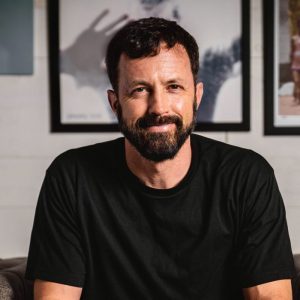
Jeremy Andrus, CEO of Traeger
In October 2014, Jeremy Andrus, the CEO of grill and smoker manufacturer Traeger, faced a defining moment for the company’s future. After announcing plans to close Traeger’s warehouse and trucking operations to outsource logistics, he arrived at the office to find a fire consuming one of their big-rig trucks—an apparent act of arson likely fueled by the backlash from the restructuring news. This incident underscored a deep-seated cultural toxicity within Traeger, marked by a lack of trust, defiance, and negative attitudes. Reflecting on the company’s issues, Andrus realized that transforming the culture would require a drastic, foundational change rather than incremental improvements. He decided that the only way forward was to dismantle the existing culture and rebuild from the ground up.
The Approach: Culture Reset through Relocation
To initiate the cultural overhaul, Andrus and his team chose to relocate Traeger’s headquarters from Oregon to Utah, where they could start fresh with a workforce that aligned with the company’s new mission. They selectively invited a small number of employees to make the move, assessing them on their adaptability and openness to change. This relocation effort allowed Andrus to shed the entrenched attitudes that had stifled collaboration and growth, creating a clean slate to instill new values. The Utah office became a space aligned with Traeger’s brand identity, reinforcing community and a fresh start—free from the legacy of resistance that had plagued the company. This bold decision to reset the culture was instrumental in Traeger’s subsequent growth and transformation, enabling it to evolve in line with a revitalized and positive work environment.
Cynthia Marshall, CEO of Dallas Mavericks
In 2018, Cynt Marshall made history when Mark Cuban appointed her as CEO of the Dallas Mavericks, making her the first Black woman to lead an NBA team. Marshall took on the role amid a major investigation into a toxic workplace culture that had surfaced within the organization, with allegations of harassment and systemic issues. Her mandate was clear: to address the toxic culture, create a safer and more inclusive environment, and set a new standard for the Mavericks. Although she lacked a background in professional basketball, Marshall’s extensive experience at AT&T, where she helped manage corporate culture and led significant change, equipped her for this complex task. Facing immediate challenges, she relied on her leadership skills and her ability to inspire positive change within the organization.
The Approach: Establishing Values and a Culture of Inclusion
Marshall’s strategy to transform the Mavericks’ culture was rooted in a clear and structured approach. She began by creating a comprehensive cultural framework, establishing a vision and a set of core values to guide behavior and expectations. She introduced values such as character, respect, authenticity, fairness, teamwork, and both physical and emotional safety, which were essential to fostering a healthier workplace. Marshall also emphasized inclusivity, creating a “workplace promise” that “every voice matters, and everybody belongs.” Through one-on-one meetings with team members, she gained insights into their perspectives, built trust, and reinforced the organization’s new cultural direction. By instilling these foundational values and ensuring their visibility in everyday operations, Marshall effectively moved the Mavericks toward a positive, inclusive, and respectful workplace, actively mitigating the risk of future toxicity.
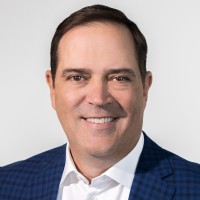
Chuck Robbins, CEO of Cisco
Under the leadership of CEO Chuck Robbins, Cisco has established a unique cultural framework known as “Conscious Culture.” This approach prioritizes a mindful and intentional work environment where employees at every level practice self-awareness, accountability, and empowerment. Robbins’s vision is to create a workplace that isn’t just productive but supportive and inclusive, reflecting a belief that culture can be the differentiator in attracting and retaining top talent in the tech industry.
The Approach: Building a Conscious Culture
Cisco’s Conscious Culture rests on three pillars: environment, characteristics, and experience. The environment emphasizes dignity, respect, fairness, and equity, actively fostering diversity and inclusion across the company. This foundation is bolstered by Cisco’s characteristics, which include a commitment to kindness and giving back, as demonstrated by its CSR initiatives and an emphasis on “Full Spectrum Diversity.” The diversity framework ensures inclusivity across dimensions like gender, age, race, orientation, and more, striving to mirror the diversity of Cisco’s global market.
Finally, the experience focuses on employee interactions within teams and management, ensuring that employees feel recognized, challenged, and are able to leverage their unique strengths daily. Cisco nurtures a sense of collective purpose, mutual trust, and safety, fostering an environment where teams feel confident in the company’s direction and supported in their growth.
Robbins’s approach has positioned Cisco as a top employer by cultivating an environment where employees thrive, embodying Cisco’s commitment to making the company “the best place to work.”
Executive Movements:
Leadership Transitions & Strategic Pivots
CEO Movements
Amway has announced the appointment of Michael Nelson as its new president and CEO. Nelson, a long-time Amway leader with over 30 years at the company, brings extensive experience in areas such as human resources, technology, and supply chain management.
Mary Carmen Gasco-Buisson took the helm as CEO of Unilever’s Prestige Division on November 1, succeeding Vasiliki Petrou, who led the division for ten years. Gasco-Buisson, a beauty and retail industry veteran, returns to Unilever after previously overseeing global brands Axe and Lynx. She brings extensive experience from her recent role as CMO and EVP at Pandora and two decades at P&G, where she held senior roles for brands like Hugo Boss and Olay.
Sony Pictures Entertainment (SPE) Chairman and CEO Tony Vinciquerra will step down from his CEO role on January 2, 2025, transitioning leadership to Ravi Ahuja, current Chairman of Global Television Studios and President and COO of SPE. Vinciquerra, who led a significant turnaround at SPE since 2017, will remain as non-executive Chairman until December 2025. Ahuja, who joined SPE in 2021 and has overseen major productions and acquisitions, brings extensive experience from previous leadership roles at Disney and Fox.
Charles Schwab announced that Rick Wurster, current President, will succeed Walt Bettinger as CEO at the end of 2024, ending Bettinger’s 16-year tenure. Bettinger, who led significant growth and the acquisition of Ameritrade, will remain involved as executive co-chair of the board. The leadership change comes as Schwab faces market pressures from rising interest rates, which have impacted recent earnings by increasing deposit and debt costs.
Revlon Group Holdings LLC has named Michelle A. Peluso as its new Chief Executive Officer, effective November 4. Peluso, who brings extensive strategic and operational expertise, will also join Revlon’s Board of Directors. She previously served as Chief Customer and Experience Officer at CVS Health and held senior roles at IBM, Citi, Travelocity, and Gilt. Elizabeth A. Smith, interim CEO since August 2023, will remain as Executive Chair of the Board. Peluso also serves on the board of directors for Nike.
Kering has appointed Stefano Cantino as CEO of Gucci, effective January 1, 2025. Cantino, who joined Gucci in May 2024 as Deputy CEO, will succeed Jean-François Palus and report to Francesca Bellettini, Kering’s Deputy CEO in charge of Brand Development. Palus, who led Gucci since July 2023, focused on setting up the brand’s future foundation and hiring Cantino as his successor.
Warner Music Japan has appointed Takeshi Okada as its new President and CEO. Okada joins Warner Music from EMI Records Japan, where he served as Managing Director since 2018 and supported the careers of major artists like Yumi Matsutoya and Mrs. GREEN APPLE. His leadership comes as Warner Music Japan continues to grow in Japan, the world’s second-largest music market after the United States.
CVS Health has named David Joyner as its new CEO, succeeding Karen Lynch, who stepped down by mutual agreement with the board. Joyner, a CVS veteran and former head of Caremark, takes over as the company faces financial challenges, including elevated medical costs in its Aetna segment, which led CVS to pull its earnings guidance. CVS’s stock dropped over 7% following the announcement, reflecting investor concerns.
Ogilvy has appointed Mario Muredda as the new Global CEO of Ogilvy Health, succeeding Kim Johnson, who is leaving after three years to pursue new opportunities. Muredda will lead Ogilvy Health’s global operations, including Brand Strategy, Advertising, Public Relations, Medical Education, and Market Access, with a focus on accelerating growth.
Dentsu Canada has announced the promotion of Patrick Hounsell to CEO, where he will lead the Canadian market with a focus on innovation and integration. Hounsell, a veteran of the digital marketing industry with 25 years of experience, has built successful teams and solutions leveraging data, technology, and media. Additionally, dentsu appointed Stephen to lead Tag Americas, driving tech-enabled, AI-integrated creative production across the U.S., Canada, and Latin America.
Microsoft has appointed Darren Hardman as the new CEO of Microsoft UK, succeeding Clare Barclay, who served as CEO for four years. Hardman joined Microsoft in 2023 as Corporate VP for EMEA, bringing prior experience as CEO of AWS UK & Ireland and President of Avanade EMEA.
Airbus has announced Lars Wagner, CEO of MTU Aero Engines, as the incoming head of its commercial aircraft business. Wagner will join Airbus’s Executive Committee at the start of 2026 after completing his current contract at MTU. He will take over from Christian Scherer, a long-time senior executive in the role.
Toyota Canada Inc. (TCI) has announced several executive changes effective January 1, 2025. Larry Hutchinson, TCI’s President and CEO since 2016, will retire on December 31, 2024. Cyril Dimitris, currently Vice President of Sales and Marketing, will step into the role of President and CEO, overseeing all TCI operations. Robert (Bob) Tsang, Director of Toyota Sales and Field Operations, will be promoted to Vice President of Sales and Marketing, reporting directly to Dimitris.
HSBC’s Group COO, John Hinshaw, will step down after five years, taking a six-month gardening leave. During his tenure, Hinshaw enhanced third-party supplier relationships, advanced HSBC’s innovation strategy, and secured a new global headquarters in London. In a shift under newly appointed Group CEO Georges Elhedery, the responsibilities of the COO role will now be split into two executive positions: an expanded Group Chief Information Officer (GCIO), assigned to Stuart Riley, and an interim Group COO, temporarily held by Suzy White. White, a 25-year HSBC veteran, will serve as interim GCOO while a formal recruitment process is conducted.
CFO Movements
Numerous companies welcomed new CFOs in October 2024, highlighting strategic financial shifts across industries.
- S&P Global appoints Eric Aboaf as CFO, leveraging his financial leadership experience from State Street Corporation.
- Zoom names Michelle Chang, a veteran Microsoft executive, as its new CFO, reporting to CEO Eric Yuan.
- EasyJet hires Jan De Raeymaeker as CFO, transitioning him from European rail operator Lineas.
- Coherent appoints Sherri Luther as CFO, drawing on her extensive strategic finance experience from Lattice Semiconductor.
- Match Group selects Steven Bailey as its next CFO, emphasizing strategic growth and disciplined cost management.
- Luna Innovations names William Phelan as CFO and CAO, succeeding John Roiko, who will transition to a consulting role.
- Keel Holdings appoints Matt Klein as CFO, bringing expertise in scaling defense-focused businesses.
- HNI Corporation promotes Vincent Berger to CFO, adding over 30 years of finance and operational experience.
- Genesco names Sandra Harris as CFO, leveraging her experience in retail, finance, and supply chain.
- 4imprint Group appoints Michelle Brukwicki as CFO Designate, succeeding David Seekings in a planned leadership transition.
- EDITED names Mike MacKeen as CFO, adding his private equity and SaaS growth expertise.
- Elevate hires William DiBlasi as CFO, leveraging his sports finance background from Inner Circle Sports and Goldman Sachs.
CIO/CTO Movements
- SunLife appoints Maya Beri as CIO, bringing extensive experience in technology and IT strategy from her role at SLC Management.
- Lincoln Financial names Jennifer Charters as CIO, leveraging her leadership experience from Flagstar Bank and Ally Financial.
- Hershey welcomes Gene Kholodenko as CIO, drawing on his two decades of IT leadership at Procter & Gamble.
- HSBC appoints William Chan as Global CIO and Head of Investments for its Global Insurance division, expanding leadership in financial technology and investment strategy.
Insights: Inferring the why
The recent wave of CEO transitions highlights several critical trends and priorities across industries. These movements reflect a broad organizational focus on aligning leadership with evolving strategic needs, particularly in response to heightened market complexities and rapid technological advancements. Companies are increasingly appointing leaders with diverse backgrounds in digital transformation, operational resilience, and customer-centric innovations to navigate the demands of today’s dynamic business landscape.
A common theme in these appointments is the emphasis on growth and long-term positioning. New leaders are expected to drive innovation, improve operational efficiency, and strengthen market presence, especially in sectors facing disruptive change. Many organizations are also prioritizing leaders with experience in managing complex, multi-faceted operations, reflecting a desire to unify various business functions under a cohesive strategy. This approach often includes promoting internal leaders familiar with the company’s culture and vision, indicating a preference for continuity and insider knowledge over external disruption.
Additionally, there is a clear focus on maintaining or enhancing organizational resilience. Many incoming CEOs are taking on their roles amid financial challenges, such as cost pressures, elevated interest rates, and shifts in consumer behavior. These leaders are often tasked with implementing cost-saving measures or restructuring strategies, signaling a strong emphasis on financial prudence and adaptability.
Lastly, there is an increased recognition of the importance of stakeholder alignment. As organizations place greater emphasis on diversity, sustainability, and corporate responsibility, leaders with a proven track record in these areas are being chosen to reflect and advance these values. This trend demonstrates a commitment to fostering inclusive and sustainable growth, further strengthening the alignment between leadership priorities and the broader corporate mission.
The Invisible Seeds of Toxicity: How Proactive Leaders Prevent Cultural Decay Before It Takes Root
When people think of “toxic culture,” images of open conflict or widespread disengagement come to mind. Yet, the reality is that toxicity often begins quietly, in subtle and unassuming ways. By the time symptoms like turnover or disengagement are visible, toxicity has already taken root. The challenge for today’s executives is not just to address toxic culture—it’s to anticipate and neutralize it before it turns corrosive.
Understanding the “Pre-Toxic” Signals
Often, toxic culture begins with micro-dysfunctions that are easily overlooked, such as escalating silos, passive-aggressive communication styles, and informal hierarchies that go unaddressed. Studies indicate that signs of impending cultural decay appeared nearly a year before any resignations took place. Executives who prioritize “pulse checks” on these micro-dysfunctions can spot toxicity while it’s still a seed, rather than a sprawling weed. This requires leaders who can read between the lines, interpret minor conflicts with a critical eye, and sense “micro-climates” of negativity within teams.
1. Why Conventional Culture Audits Miss the Mark
Traditional culture audits often fall short because they focus on broad employee satisfaction surveys or generalized engagement metrics. These methods tend to gloss over the nuances of employee experience that precede cultural toxicity. What’s needed instead is a behavioral audit that looks at unstructured employee interactions, informal feedback patterns, and emerging “in-groups” or “out-groups” within the organization. Leaders skilled in behavioral data analytics—those who can analyze these raw insights without judgment—are better positioned to detect early signs of discord.
2. Emotional Recalibration—A Natural Extension of Emotional Intelligence
Top-tier executives are increasingly aware that emotional intelligence alone is not enough; they need a specific skill in emotional recalibration. Emotional recalibration involves actively shifting the emotional tenor of interactions and decision-making to build resilience and adaptability among teams. This is especially important in times of rapid change or stress. Leaders with recalibration skills can identify when emotions are escalating toward negativity and intervene to “reset” morale before cynicism and mistrust take root. Companies investing in leaders trained in emotional recalibration tend to report not only lower instances of workplace toxicity but increased agility in challenging environments.
3. Self-Accountability as a Pillar of Healthy Culture
One of the most overlooked aspects of a leader’s influence on culture is their own accountability. In progressive organizations, the healthiest cultures stem from the top-down practice of self-auditing. Leaders who regularly evaluate their own behaviors and decision-making processes create an environment where self-accountability is the norm. This practice can create a powerful buffer against toxic behaviors spreading unchecked.
A Call to Action for Boards and Executives: Making the Invisible Visible
The modern workplace demands that executives view culture as a dynamic ecosystem that needs constant tending and vigilance. Toxicity doesn’t have to be a reactive battle—it can be averted through proactive leadership that reads the subtle signals, embraces continuous self-improvement, and fosters transparency.
Closing Thought
Leaders today face a new frontier in culture-building—one that requires a blend of empathy, foresight, and rigorous self-awareness. With the right executive leadership, any organization can turn the invisible drivers of toxicity into visible opportunities for growth.
